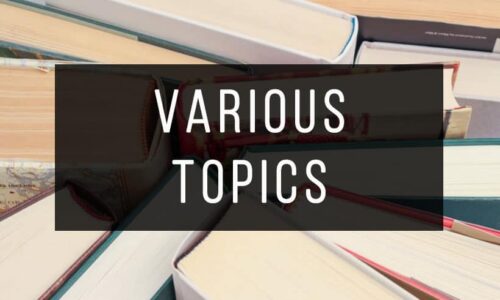Rediscover the enchanting tales of Hans Christian Andersen with our free collection of Hans Christian Andersen books in PDF format.
Hans Christian Andersen, the beloved master of fairy tales, created timeless stories that capture the imagination of readers young and old. His works are filled with magic, moral lessons, and unforgettable characters.
From classics like The Little Mermaid and The Ugly Duckling to The Snow Queen and other hidden gems, Hans Christian Andersen’s stories continue to inspire wonder and teach valuable lessons about kindness, courage, and resilience.
Perfect for families, educators, and lovers of folklore, this collection offers a journey into a world of enchantment and heartfelt storytelling.
Download these Hans Christian Andersen books in PDF now and share the timeless magic of his fairy tales with generations to come.
1) A Christmas Greeting
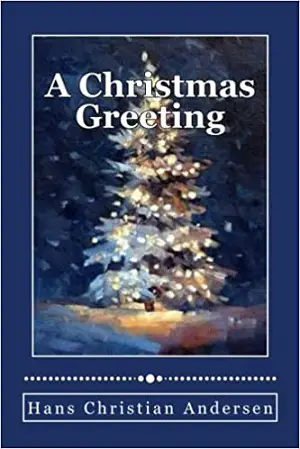
A Christmas Greeting is a collection of 13 short stories originally published in 1847. It includes The Old House, The Drop of Water, The Story of a Mother, The False Collar, The Shadow, The Old Street-Lamp, The Dream of Little Tuk, The Naughty Boy and The Two Neighboring Families.
Andersen wrote these stories after visiting one of the most endearing storytellers in the history of literature, Charles Dickens, for whom he had great respect. In fact, the two authors respected each other and respected each other as writers.
One of the elements present in many of his stories are the inanimate objects that come to life, together with his unquestionable narrative mastery, which was and still is capable of reaching the hearts and minds of his readers, regardless of generations, age, geographical location and social class.
2) Andersens Fairy Tales
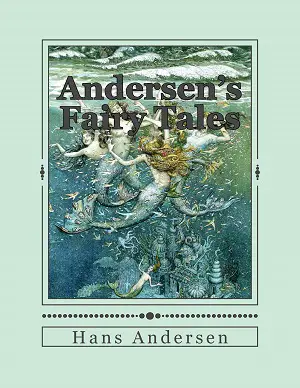
Although Andersen was a renowned author of novels, travel stories and plays, he is best known for his world-famous children's and fairy tales, such as The Emperor’s New Clothes, which have been translated into more than 120 languages over the years.
In this collection of classics we can find the following stories: The Emperor’s New Clothes, The Swineherd, The Real Princess, The Shoes Of Fortune, The Fir Tree, The Snow Queen, The Leap-Frog, The Elderbush, The Bell, The Old House, The Happy Family, The Story Of A Mother, The False Collar, The Shadow, The Little Match Girl, The Dream Of Little Tuk, The Naughty Boy and The Red Shoes.
Immerse yourself in reading these great children's stories by one of the most popular writers of all time. Andersen's Fairy Tales are sure to evoke memories of your childhood, but they will also make you reflect with their lessons of virtue and resilience in the face of adversity.
3) O.T. A Danish Romance
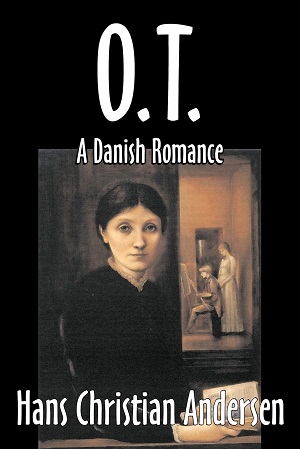
This novel, written in 1836, is a coming-of-age story. It tells us about the life of Otto Thostrup who is a melancholic and somewhat gloomy man (like the story itself) who is greatly affected by his past.
We also have his best friend Wilhelm, in fact, at the beginning of the story Otto meets Wilhelm's family in Copenhagen, which makes him feel shy and out of place, which, interestingly, is how Andersen describes his feelings on his arrival in the city.
O.T. A Danish Romance was very well received in its time and will surely also appeal to many today, as it highlights themes such as nobility in people, and the difficulties that many suffer because of their conditions of birth. Undoubtedly, it is a very interesting book that allows us to make a social and moral study of the time.
4) Pictures of Sweden

Hans Christian Andersen, who was a great traveler, wrote several travelogues, of which Pictures of Sweden is the first. This work, first published in 1851, includes a collection of travel sketches and even several fairy tales.
Pictures of Sweden was very popular at the time, it was written during the author's travels through the country in the 19th century, and combines documentary and descriptive accounts of his experiences during his stay in the country.
It provides an insight into the history of Sweden, its people and customs. It is worth mentioning that Andersen continued to publish other travelogues, such as Shadow Pictures of a Journey to the Harz and Swiss Saxony, due to its popularity. If you are passionate about reading and traveling, this book will surely be to your liking.
5) Rudy and Babette
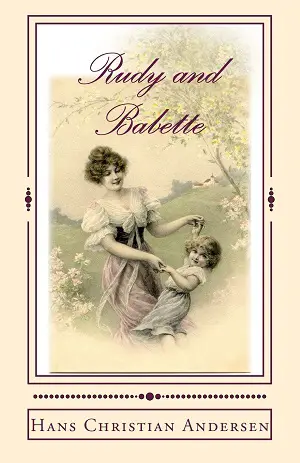
Rudy and Babette, also known as The Ice-Maiden, is a literary tale from 1861 that Andersen wrote towards the end of his career. It tells the story of Rudy, a young boy who, after losing his parents, goes to live with his uncle. The years pass and as he grows up he becomes a skilled, strong and brave mountaineer and hunter.
The story is set in Switzerland, with its beautiful mountains, snowy fields and grassy valleys with streams and brooks. It is also inspired by a local legend about the Île de Peilz, a small island in Lake Geneva.
One of the main themes is the love story between Rudy and Babette, the daughter of a rich miller who does not approve of the union. One day, Rudy meets a beautiful maiden, the Ice Maiden, who killed his mother when he was a baby and claimed him as her own.
6) Stories From Hans Andersen

Stories From Hans Andersen is a collection of fairy tales that includes the titles: The Snow Queen, The Nightingale, The Mermaid and the world-famous The Emperor's New Clothes. The Snow Queen is one of Andersen's most acclaimed stories, first published in 1844, whose plot revolves around the struggle between good and evil among Gerda and her friend Kai.
The Nightingale is about an emperor of China who prefers the tinkling of a mechanical bird to the song of a nightingale. Years later, the emperor falls deathly ill, but thanks to the nightingale's beautiful song, Death is so moved that he is allowed to live.
The Mermaid is a tale first published in 1837. It tells the story of a young mermaid who is willing to give up her life at sea to obtain a human soul.
7) The Ice Maiden and Other Tales
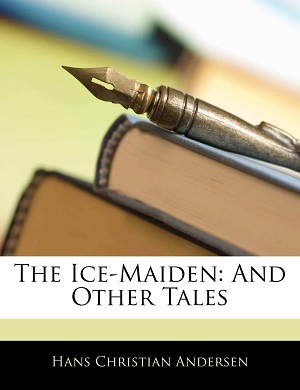
The story of the main title of The Ice Maiden and Other Tales revolves around Rudy, who lost his parents when he was very young. Over the years, our protagonist grew into a strong, brave and skillful young man, but perhaps not strong enough to escape his fate.
This story set in beautiful Switzerland is very sad and bleak for many, some even consider it not a children's story, as when Rudy is to marry his love, Babette, the Ice Maiden intends to claim him as her own, which has a tragic ending.
Among the other tales included are The Butterfly, The Psyche and The Snail and The Rose-Tree. The Butterfly presents us with an allegory of men who wait and wait for the perfect woman... but are always left alone: The Butterfly who keeps finding imperfections in every flower it finds.
8) The Sand Hills of Jutland

It is a compendium of stories, including The Bottle Neck, in which a bottle of wine is taken to a picnic, where one of the guests is the son of a portrait painter who is about to leave for the navy, much to the sadness of a farmer's daughter. They agree to marry when he returns, so they toast with the wine in the bottle.
When the bottle is empty, the portrait painter's son tells it: "You have been a part of the happiest day of my life. You shall never serve anyone else", and throws it. Two children find it and take it to their mother, who fills it with brandy and gives it to her other son, a sailor who is about to leave on the same boat as the portrait painter's son...
Other works include The Sand Hills of Jutland to which it owes its title - the story of a noble baby born on the night of a shipwreck in a terrible storm. The Mud-King's Daughter, The Quickest Runners, The Bell's Hollow, among others.
9) The True Story of My Life

The Danish poet and novelist Hans Christian Andersen (1805-1875) is best known for the dozens of fairy tales he wrote, including The Little Mermaid, The Ugly Duckling and The Snow Queen.
Andersen's sense of fantasy, power of description and keen sensitivity made him a master storyteller, and these gifts are strikingly evident in his autobiography entitled The True Story of My Life.
With this significant title, the most universal of Danish writers gave us an account of his life that not only provides us with the keys to understanding his original and complex personality, but also to better understanding the plots of his most famous stories.
10) The Little Match Girl
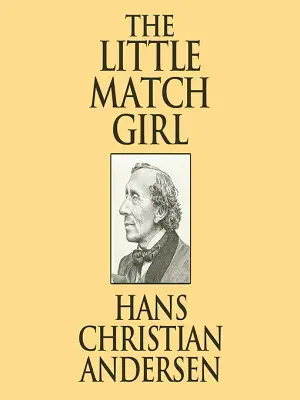
The Little Match Girl is a literary fairy tale by the Danish poet and writer. On a cold New Year's Eve, a poor girl, shivering and barefoot, tries to sell matches in the street. Afraid to return home because her father will beat her for not selling matches, she huddles in the angle between two houses and lights matches for warmth.
In the flame of the matches, she sees a series of comforting visions: a warm iron stove, a Christmas party, a happy family and a Christmas tree. In the flame of the next match, she sees her grandmother, the only person who has ever treated her with love and kindness. To keep the vision of her grandmother alive for as long as possible, the girl lights the whole pack of matches.
When the matches run out, the girl dies and her grandmother takes her soul to heaven.
11) The Wild Swans
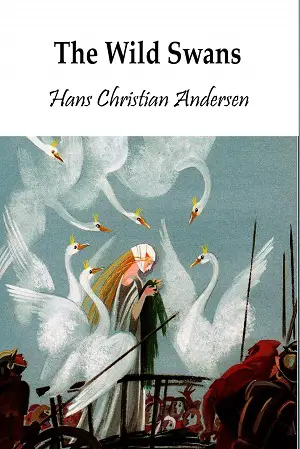
The Wild Swans is a fairy tale about a princess who rescues her eleven brothers from a spell cast by an evil queen.
In a faraway kingdom, a widowed king lives with his twelve children: eleven princes and a princess. One day, he decides to remarry, but marries an evil queen who is a witch. Out of spite, the queen turns her eleven stepsons into swans (they are allowed to become human at night) and forces them to fly. The queen then tries to cast a spell on their 15-year-old sister Elisa, but Elisa's goodness is too strong for this, so the queen banishes her. The brothers take Elisa to safety in a foreign land where she is out of the reach of her wicked stepmother.
In the end, it is Elisa's kindness that allows the witch's spell to be broken.
12) The Ugly Duckling
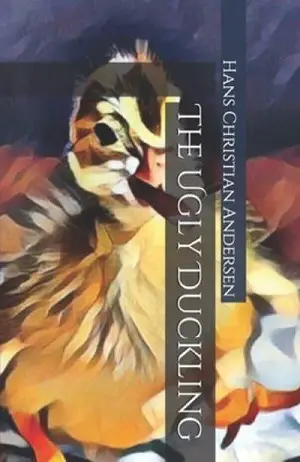
The Ugly Duckling is a literary fairy tale by the Danish poet and writer. The Ugly Duckling was first published on 11 November 1843, along with three other Andersen fairy tales, in Copenhagen, Denmark, to critical acclaim.
The story has been adapted into a variety of media, including opera, musicals and animated films. The story is Andersen's invention and owes no debt to fairy tales or folklore.
At the beginning of the story, the eggs of a mother duck hatch. One of the ducklings is perceived by the other ducks and farm animals as an ugly creature and suffers much verbal and physical abuse from them. The story unfolds with various characters making fun of the duckling's appearance, but in the end the duckling turns into a beautiful swan, giving the story a happy ending.
13) The Emperors New Clothes

The Emperor’s New Clothes is a literary folktale about a vain emperor who exposes himself to his subjects.
Two swindlers arrive in the capital of an emperor who spends lavishly on clothes at the expense of state affairs. Posing as weavers, they offer to provide him with magnificent garments invisible to the stupid or incompetent.
The emperor hires them, they set up looms and set to work. A succession of officials, and then the emperor himself, visit them to check their progress. Everyone sees that the looms are empty, but they pretend otherwise so as not to be considered fools. Finally, the weavers report that the emperor's suit is finished. They pretend to wear it and parade it in procession in front of the whole city. The people awkwardly accept the pretence, not wanting to appear inept or stupid, until a child says that the emperor is not wearing clothes.
14) The Candles
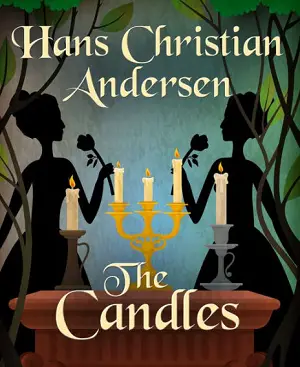
The Candles is a 700-word literary fairy tale by the Danish writer.
It was written in the 1820s, making it one of his earliest works and his first known work in the fairy tale genre, but its existence was apparently unknown to scholars or the public for almost two centuries. In October 2012 a copy of the manuscript was discovered in an archive box at the National Archives of Funen.
A tallow candle, whose parents are a sheep and a melting pot, becomes increasingly discouraged as it finds no purpose in life. It encounters a tinderbox that lights a flame in the candle, and it finally finds its right place in life and spreads joy and happiness to itself and its fellow creatures.
15) Red Shoes
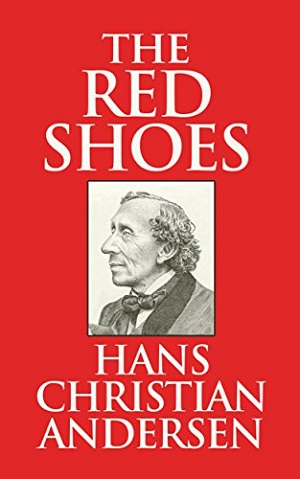
Red Shoes is a fairy tale about a little girl forced to dance continuously in her red shoes.
A peasant girl named Karen is adopted by a rich old woman, and grows up vain and spoiled. Before being adopted, Karen had a rough pair of red shoes; now she asks her adoptive mother to buy her a pair of red shoes fit for a princess. Karen falls in love with her new shoes and wears them to church, even though they are not appropriate.
On the way to church, she meets a mysterious old soldier with a red beard. «Oh, what beautiful shoes for dancing» says the soldier. «Never come off when you dance» he says to the shoes, and slaps them with his hand. Karen can't stop dancing, since the shoes are controlling her like a lesson for her vanity.
16) Snow Queen
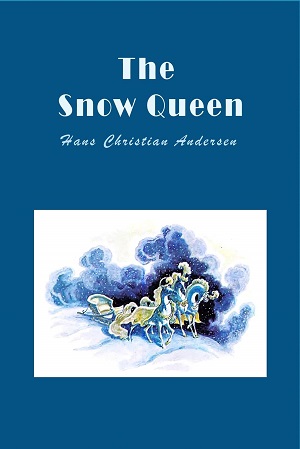
Snow Queen is a fairy tale. It was first published on 21 December 1844 in New Fairy Tales. The story focuses on the struggle between good and evil as experienced by Gerda and her friend, Kai.
The tale is one of Andersen's longest and most acclaimed. It is regularly included in selected children's stories and collections of his work. The Snow Queen is a tale told in seven stories:
●Which deals with a mirror and its fragments ●About a little boy and a little girl ●The garden of the woman learned in magic ●Prince and princess ●The little robber girl ●The lapp woman and the finn woman ●What happened in the snow queen's palace and afterwards
17) The Flying Trunk
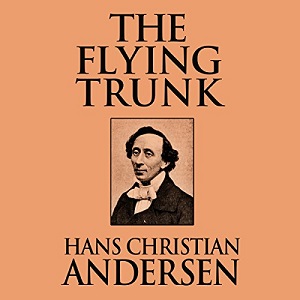
The Flying Trunk is a fairy tale about a young man who has a flying trunk.
A young man squanders his inheritance until he has nothing left but a few shillings, a pair of slippers and an old dressing gown. A friend sends him a trunk with instructions to pack up and leave. With nothing else to pack, he puts himself in the trunk. The trunk is enchanted and it takes him to the land of the Turks. He uses the trunk to visit the Sultan's daughter, who is kept in a tower because of a prophecy that her marriage will be unhappy.
He convinces her to marry him. To celebrate their impending marriage, the young man buys fireworks. But a spark incinerates the trunk, and the young man can no longer visit the princess in the tower. Instead, he wanders the world telling stories.
18) The Jumper
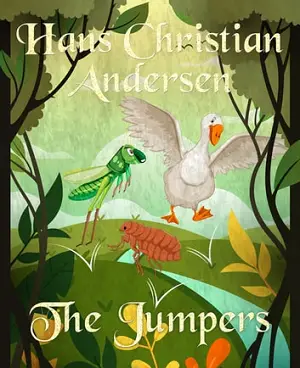
The Jumper is a children's story in which a flea, a grasshopper and a skipjack (a Danish jumping toy) compete to see which of them can jump the highest. A large number of people come to the king's palace to watch the competition, as the winner will marry the king's daughter.
The flea jumped so high that no one could see it, and so it was said that it had not jumped. The grasshopper only jumped half as high as the flea, but it jumped right in the king's face to his chagrin.
The skipjack got up, a little sideways, and jumped into the princess's lap, to which the king said “that is the highest jump; he could not go higher than my daughter, and that is the best of it. It was a sign of genius to have such an idea…”, whereupon he won the contest.
19) Little Claus and Big Claus
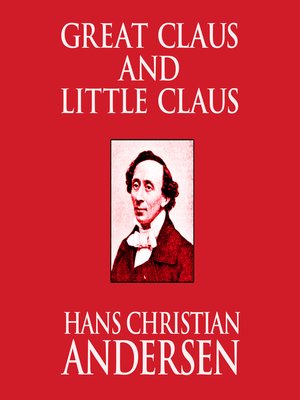
Little Claus and Big Claus is a fairy tale published in Danish in 1835 in the first installment of his booklet Fairy Tales Told for Children.
In a village live two men called Claus. To distinguish between them, the one who has only one horse is called Little Claus, and the other, who has four horses, is called Big Claus. Every week, Little Claus lends the horses from Big Claus to his field. During this, he constantly calls them his five horses.
Angry at this, as only one horse really belongs to Little Claus, Big Claus tells him to stop saying it. However, he does it again, so Big Claus kills his neighbor's only horse. Little Claus skins it, puts the horse in a sack and takes it away to sell. During his journey, he has several adventures.
20) Little Tiny or Thumbelina
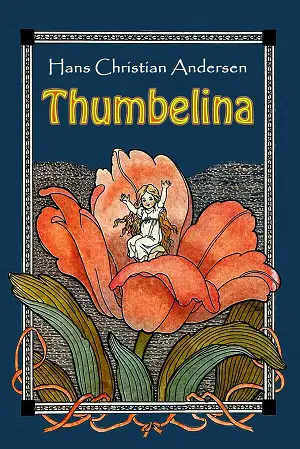
Thumbelina is a fairy tale, first published on 16 December 1835 in Copenhagen, Denmark, with «The Naughty Boy» and «The Travelling Companion» in the second installment of Fairy Tales Told for Children.
Thumbelina is about a little girl and her adventures with married toads, moles and cockchafers. She manages to avoid their intentions before falling in love with a flower prince who is her size.
The tale is mainly Andersen's invention, although he was inspired by miniature people's tales such as «Tom Thumb». The first English translation of Thumbelina dates from 1846. The story has been adapted into various media, such as soap operas and animated films.
21) The Marsh Kings Daughte
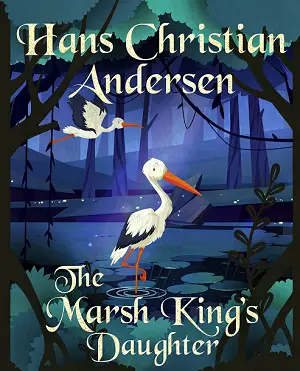
The Marsh Kings Daughter is a beautiful tale in which the Danish-born author transports us to a land of fantasy and beauty.
This colorful tale will transport you from a Viking village in Northern Denmark to the fiery lands of Egypt.
It is the story of a girl, Helga, a creature whose destiny represents the struggle between good and evil and the redemption achieved by willpower and God's help. A story that will awaken your imagination and bring you closer to a fantastic world of love and hope.
22) The Nightingale
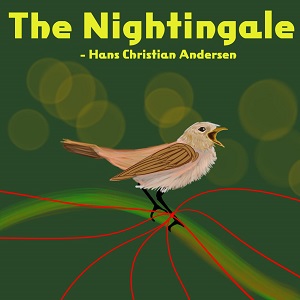
The Nightingale is a fairy tale about an emperor and the song of the nightingale. It is believed that the tale was inspired by the author's unrequited love for the opera singer Jenny Lind, the «Swedish nightingale».
The emperor of China discovers that one of the most beautiful things in his empire is the song of the nightingale. When he orders the nightingale to be brought to him, a maiden leads the court to a nearby forest, where the nightingale agrees to appear before the court. When the Emperor receives a bejeweled mechanical bird, he loses interest in the real nightingale, which returns to the forest.
The mechanical bird breaks down and the Emperor is taken deathly ill a few years later. The real nightingale learns of the Emperor's condition and returns to the palace. Death is so moved by the nightingale's song that he lets the Emperor live.
23) The Princess and the Pea
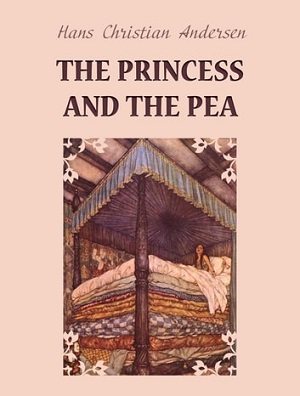
The Princess and the Pea is a literary fairy tale about a young girl whose royal ancestry is established by a test of her sensitivity. The tale was first published by Andersen, along with three others, in an inexpensive booklet on 8 May 1835 in Copenhagen.
Andersen had heard the tale as a child, and it probably has its origin in folk material, possibly originating in Sweden, as it is unknown in the Danish oral tradition.
Neither The Princess and the Pea nor Andersen's other tales of 1835 were well received by Danish critics, who took a dim view of their informal, chatty style and lack of morals.
24) The Shepherdess and the Sheep
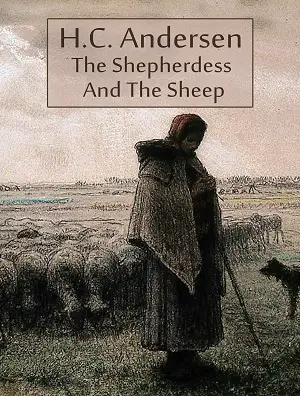
The Shepherdess and the Sheep is a fairy tale.
Two Chinese figures (a shepherdess and a chimney sweep) stand side by side at a table. They are in love. However, their romance is threatened by the carved mahogany figure of a satyr called «General-clothes-press-inspector-head-superintendent-Goat-legs» who lives in a nearby cabinet and wants the shepherdess as his wife.
The satyr bothers a porcelain Chinaman at the table (who is considered the shepherdess's grandfather) to consent to the marriage. When the Chinaman agrees to the union, the shepherdess and the chimney sweep flee, clambering down a table leg to the floor. On the way to escape the lovers encounter new things, but in the end they return to their table and live happily ever after.
25) The Swineherd
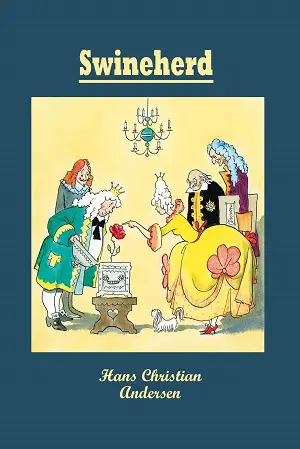
The Swineherd is a tale that seems to be an original by Andersen, although similar stories are known.
A poor prince wants to marry the emperor's daughter and sends her two beautiful gifts, a nightingale and a rose. The princess rejects the humble gifts because they are real and natural, rather than artificial. The prince then disguises himself and applies for the job of swineherd in the palace.
Once on the job, he creates a musical pot. The princess walks through the mud to the swineherd's hut and pays ten kisses for the pot. The swineherd creates a musical rattle and the princess pays one hundred kisses for it. The emperor, disgusted that his daughter has kissed a swineherd, throws her out. The prince, finding the princess unworthy of his love, washes his face, puts on his royal robes and also despises the princess.
26) The Tinder Box
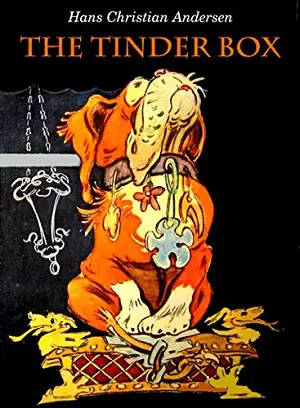
The Tinderbox is a tale about a soldier who acquires a magical tinderbox capable of summoning three powerful dogs to do his bidding. When the soldier summons the dogs to take the princess to sleep in his room, he is condemned to death, but cleverly summons the dogs to save his life.
The story has its origins in a Scandinavian folk tale that Andersen learned as a child, but similarities have been noted with Aladdin and the Wonderful Lamp and other tales.
The story was one of Andersen's earliest fairy tales, and was published on 8 May 1835 in an inexpensive booklet with three other Andersen tales. In 1946, The Tinderbox was the basis for Denmark's first animated film, and in 2007, for a ballet with costumes and scenery designed by Queen Margrethe II.
27) The Darning Needle
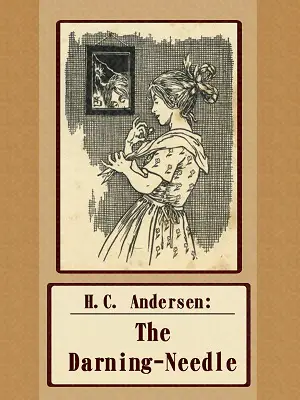
The Darning Needle is a story about vanity and how it can determine people's lives.
Once upon a time there was a darning needle so vain that it thought nothing was too much: - I am so thin and so fine, - it said to the pins - and you are so vulgar.... I don't understand how I can be next to you. And it slid down the fabric proudly showing the thread that went with it.
One day the needle broke and the seamstress, after applying sealing wax to it, pinned it to the lapel of her dress: - Look how tall I am, how my slender figure looks on this velvet! I am a magnificent brooch, a splendid pin.
The vanity of the needle did not allow it to accept reality. Even after it has reached a drain, it goes on talking about itself without anyone listening to it.
28) The Travelling Companion
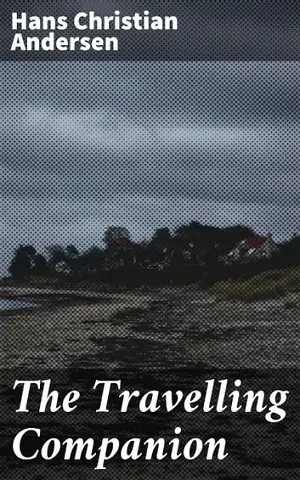
The Travelling Companion is a story in which the author, as in his other works, conveys a life lesson through his characters.
The theme of this tale is simplicity, kindness and faith. Hans-Christian Andersen, a masterful observer of human nature, has imbued this work with subtle reflections on ordinary people and the meaning of their work and lives.
In a world where goodness is often undervalued, this tale helps us to remember what values really matter in life.
29) The Wicked Prince
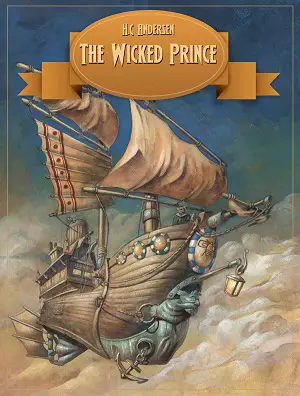
The Wicked Prince is about a merciless prince who wanted to be the strongest, and sent armies of soldiers to destroy villages and stop other kings. He even got it into his head to prove that he was worth more than God... Did he know where this arrogance would lead him?
There are people who are never satisfied, who have inordinate and arrogant ambition, and who are always dissatisfied with what they have. For them nothing is enough.
This story has a double lesson. It will show you the result of inordinate non-conformity. It will also show you that there is no small enemy; that every living thing has an important role to play and that you will always be important enough to achieve great things.




































